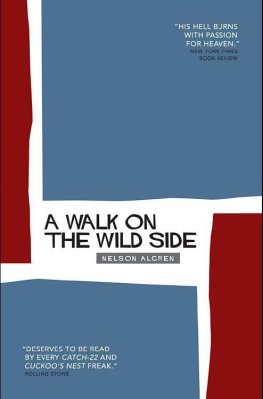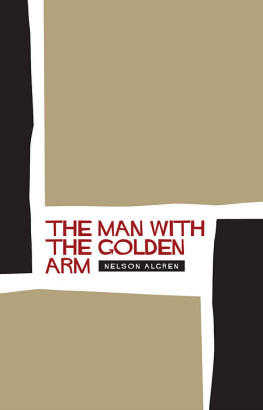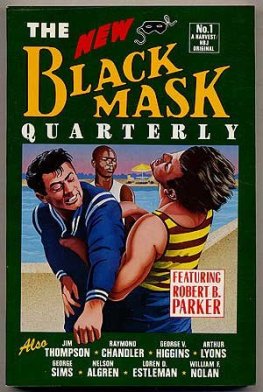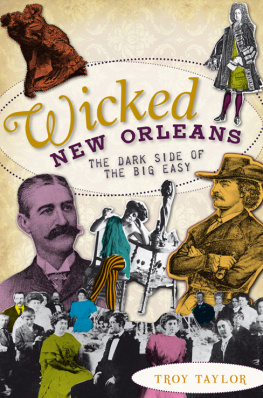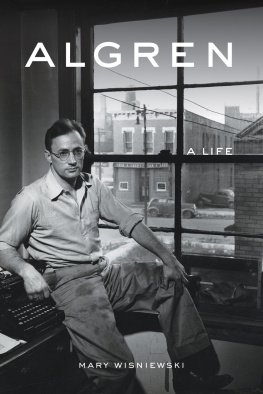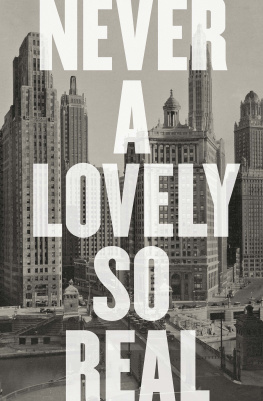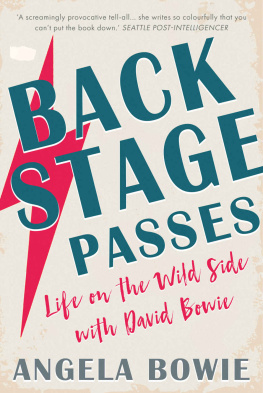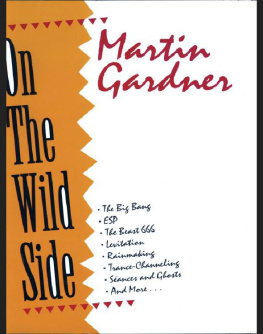Nelson Algren
A WALK ON THE WILD SIDE
Introduction
RICHARD FLANAGAN
Nelson Algrens life is terrifying in its proof that talent, love and a determination to speak truth to power can destroy a writer as surely as mediocrity and compromise. A Walk on the Wild Side, the last of Algrens novels to be published in his lifetime, is in consequence a most moving achievement. It was an act of courage by a man no longer sure of his country, no longer certain of either his own worth or his relevance, convinced only that he had lost the woman who was the great love of his life.
A Walk on the Wild Side is in some ways a desperate attempt by a writer to reassure himself that he can still write, a writer such as F. Scott Fitzgerald described himself as being in The Crack Up a work at first something of a touchstone for Nelson Algren and later a chronicle of a disintegration foretold who feels that he has become less through his writing, and worse, that he has nothing left to write. It is, then, a novel written against fate, by a writer who even at the height of his success in 1950 foresaw his own forlorn destiny as inextricably tied to his vocation as writer.
Thinking of Melville, he wrote, thinking of Poe, thinking of Mark Twain and Vachel Lindsay, thinking of Jack London and Tom Wolfe, one begins to feel there is almost no way of becoming a creative writer in America without being a loser.
There are no second acts in American literature, Fitzgerald famously remarked, and so it was with Nelson Algren. A Walk on the Wild Side is the final scene in one of the more brilliant first acts in twentieth-century American writing.
Nelson Algrens irreparably American life tends to read like a novel by Nelson Algren. Compounding the impossible wrath of the gods was the impossible nature of the man born Nelson Algren Abraham in Detroit, 1909, the grandson of Nels Ahlgren, a Swedish adventurer possessed of the unrelenting strength of others opinions. Nels Ahlgren converted to Judaism and became a self-appointed rabbi with the name of Isaac Ben Abraham, who emigrated first to the USA then, in 1870, to Jerusalem, where he chastised Jews for their lack of orthodoxy.
The family made it back to the USA where Nels Ahlgren deserted his family and became a mercenary missionary, preaching the faith of any group or sect willing to pay for his services. With characteristic perversity and some insight, Algren in his later life claimed to heavily identify with his grandfather.
A man who wont demean himself for a dollar is a phoney to my way of thinking, the late-middle-age Algren wrote in a letter, an opinion consistent with the young Algrens conviction, taken from Whitman, that he belonged with the convicts and prostitutes, believing that in humiliation and degradation was to be found truth. The truth mattered to Algren, but it didnt help.
Like all writers, wrote his friend John Clellon Holmes, he believed that truth would carry everything before it, and like all writers he was baffled to discover that nothing could be further from the truth.
Algrens family moved to Chicago when he was three, and he grew up in poverty on the South Side. Chicago was his first great passion, and the city was booming, aspiring to the title of First City of the Republic. By the mid-century it would all be over and Chicago would be in spectacular decline: What stopped it is a mystery, wrote A. J. Liebling in the New Yorker in 1952, like what happened to Angkor Wat.
Loving Chicago, Algren later said, is like loving a woman with a broken nose. But at the beginning it was for Algren the city of Shoeless Joe Jackson and the White Sox scandal, of the One Big Union and Eugene Debs and impoverished neighbourhoods bounded by Eastern European nationality, of the greatest slaughterhouses in the continent and some of its most celebrated writers Upton Sinclair, Theodore Dreiser, Sherwood Anderson and Carl Sandburg, of what he called the slander-coloured evening hour and pavement-hued faces. It was this city in its early twentieth-century struggles and urban romance that shaped Algrens vision of the USA.
Graduating as a journalist at the height of the Depression in 1931, Algren headed south seeking work, and in 1932 landed in New Orleans, a city more Caribbean than North American, where girls were so hard pressed they would let a man sleep with them if they bought them a pork sandwich.
Later, in an abandoned Texas petrol station Algren wrote his first story, which would later lead to a book advance. He was subsequently imprisoned for stealing a typewriter.
He returned to Chicago and in 1935 his first novel was published, a gritty tale of a Texan drifter that sold only 750 copies. Originally called Native Son, the title was changed by the publishers to the appalling Somebody in Boots, Algrens friend Richard Wright having the sense later to borrow the original title for what would become his most famous novel.
Algrens second novel, Never Come Morning (1942), was better received, and returning from the war in which he had served as stretcher-bearer, Algrens star further rose with a collection of short stories, The Neon Wilderness (1947).
Algrens work was attracting attention for its unusual marriage of a sumptuous prose style and a dry humour, with subjects normally rendered in the dreariest of realistic and naturalistic tones: the lives of those at the bottom. Algrens world, in one of the many memorable phrases he brought into common usage (including walk on the wild side, monkey on the back and I knew Id never make it to twenty-one anyway) is a neon wilderness, and his novels can read like a natural history of American underlife.
Street corners, beerhalls, slum bedrooms, brothels and racetracks, police line-ups and prison cells become exotic habitats when described by Algren, and his stories play out to dramatic effect beneath arc lamps and twenty-watt bulbs (its always too late in an Algren novel), in places filling with noises and rumours of noises, the rattle of freight cars, the hiss of downstairs laundry presses, the sound of far-off screams.
In 1949 came his first masterpiece, The Man with the Golden Arm. The story of a Chicago junkie trying to go straight was an immediate triumph. By 1950 Nelson Algren seemed destined for only ever-greater things. Never Come Morning was on its way to being a million seller. In March 1950 The Man with the Golden Arm was awarded the first ever National Book Award, a hugely publicised event at that brief moment, now so long gone it is hard to imagine, when American novels seemed to be central to American culture and life. Algren was given the award under a blaze of lights by Eleanor Roosevelt.
OK, kid, Hemingway privately noted in his copy of Man with the Golden Arm, you beat Dostoevsky, while publicly hailing Algren as the best American writer after Faulkner (He said, after Faulkner, Algren commented later, I was very hurt.). For a moment the man who celebrated loss had success as only America can bestow.
And then there was his love affair with one of the most famous European writers of the time: Simone de Beauvoir, who joked in a letter to Algren in 1949 while writing what became The Second Sex that she would call her new book Never Come Woman Is that not clear? a play on Algrens Never Come Morning.
De Beauvoir had met and fallen in love with Algren in Chicago in 1947. The affair continued off and on for several years. While de Beauvoir had a complex relationship with Jean-Paul Sartre, and Algren was a womaniser who had been unhappily married to Amanda Kontowicz for ten years, it does seem to have been on both writers part a grand passion. In October 1947, following de Gaulles election victory, Simone de Beauvoir wrote to the man she called her husband:

